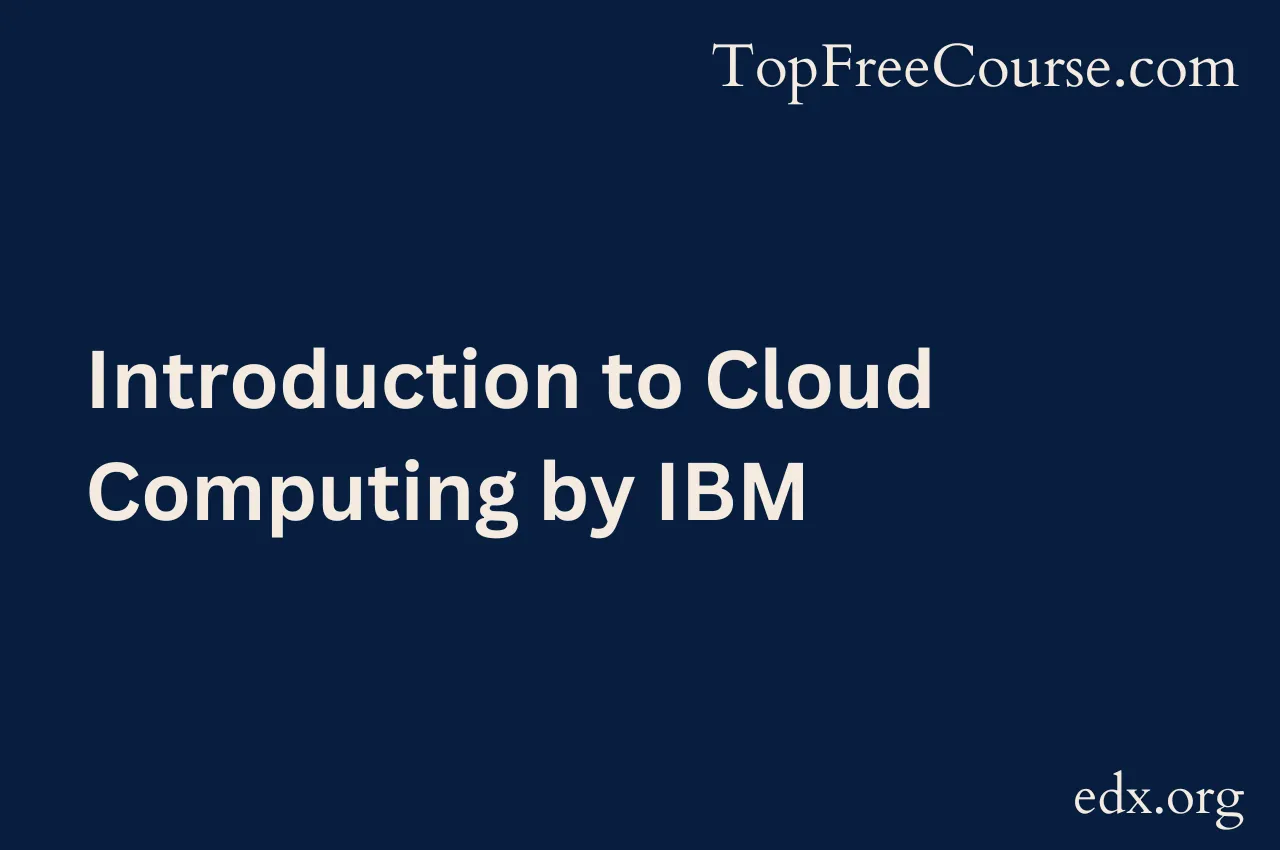What Will You Learn?
Define cloud computing and explain essential characteristics, history, the business case for Cloud, and the emerging technologies enabled by Cloud.
Describe Cloud service models, including IaaS, PaaS, SaaS
Describe Public, Private, and Hybrid Cloud deployment models.
Explain Cloud infrastructure components.
Explain emerging cloud-related trends, including Hybrid, Multicloud, Microservices, Serverless, Cloud Native, DevOps, and Application Modernization.
List and describe services of popular cloud platforms, including AWS, Microsoft Azure, Google Cloud, IBM Cloud, Alibaba Cloud, and others.
About This Course
Provider: Edx
Format: Online
Duration: 12 hours to complete [Approx]
Target Audience: Beginners
Learning Objectives: By the end of this free course you'll gain hands-on experience, having deployed an application on IBM Cloud—a shareable project that makes for an impressive employment portfolio addition.
Course Prerequisites: NA
Assessment and Certification: NA
Instructor: IBM
Key Topics: Cloud Computing, Cyber Security, DevOps, IBM Cloud Computing, Microservices, Cloud Services, Cloud-Native Computing, Amazon Web Services, Virtualization, Multi-Cloud, Serverless Computing, Cloud Computing Architecture, Blockchain, Cloud Computing Security
Topic Covered:
- - Introduction and Learning Objectives
- - Definition and essential characteristics of cloud computing
- - Expert Viewpoints: Definition and Essential Characteristics of Cloud Computing
- - History and Evolution of Cloud Computing
- - Key Considerations for Cloud Computing
- - Key Cloud Service Providers and Their Services
- - Cloud Adoption - No Longer a Choice
- - Expert Viewpoints: Cloud Adoption Benefits and Use Cases
- - Cloud Adoption - Some Case Studies
- - Internet of Things on the Cloud
- - Artificial Intelligence on the Cloud
- - Blockchain and Analytics on the Cloud
- - Introduction and Learning Objectives
- - Overview of Cloud Service Models
- - Infrastructure-as-a-Service
- - Platform-as-a-Service
- - Software-as-a-Service
- - Public Cloud
- - Private Cloud
- - Hybrid Cloud
- - Expert Viewpoints: Cloud Computing Service and Deployment Models
- - Community Cloud
- - Introduction and Learning Objectives
- - Overview of Cloud Infrastructure
- - Virtualization and Virtual Machines Explained
- - Types of Virtual Machines
- - Bare Metal Servers
- - Secure Cloud Networking
- - Containers
- - Expert Viewpoints: Components of Cloud Computing
- - Basics of Cloud Storage
- - File Storage
- - Block Storage
- - Object Storage Overview
- - Object Storage - Tiers and APIs
- - Content Delivery Networks
- - Expert Viewpoints: Cloud Storage
- - Introduction and Learning Objectives
- - Hybrid Multi-Cloud
- - Microservices
- - Serverless Computing
- - Cloud Native Applications
- - DevOps on the Cloud
- - Application Modernization
- - Expert Viewpoints: Cloud Native and Emergent Cloud Trends
- - Introduction and Learning Objectives
- - What is Cloud Security
- - Policies and Principles of Access Management
- - Identity and Access Management
- - Cloud encryption
- - Cloud Monitoring Basics and Benefits
- - Cloud Monitoring Benefits
- - Case Studies in Different Industry Verticals
- - Career Opportunities and Job Roles in Cloud Computing
- - Expert Viewpoints: Job Market for Cloud Computing
- - Final Project: Deploy an application on the cloud

Comments